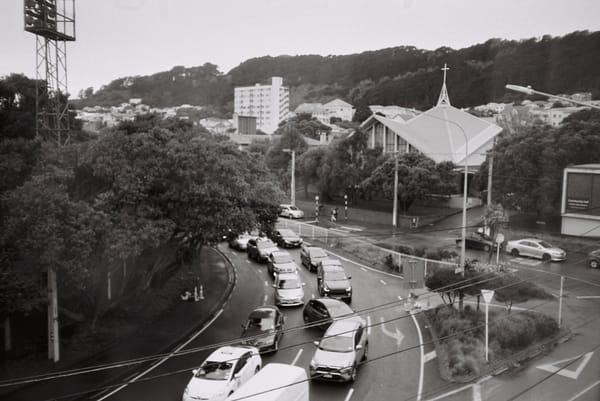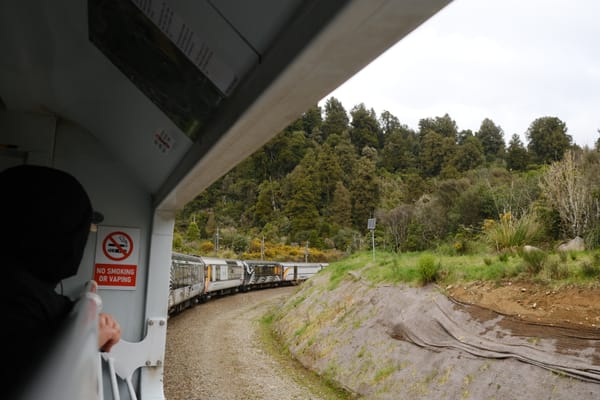Can we have better chats about big issues?

Dr. Jess Berentson Shaw used to be "a frustrated researcher".
After a while working across health psychology, she was gathering evidence and promoting ideas to improve the health of some of our most vulnerable. In her career, she’s found compelling evidence about how to fix our trickiest problems: from poverty to pollution.
So, why does solving this problem feel so fraught?
"I was quite frustrated [at] the lack of implementation of the stuff that worked," she told me over Zoom. It's a feeling I can absolutely empathise with.
Jess decided that after years of frustration, she wanted to figure out how to build support for big ideas. She started researching how to change people’s minds. How our brains reinforce shared ideas. How we respond to different ways of communicating complex and thorny topics.
Her curiosity led to her found an organisation with Marianne Elliot called The Workshop. They are experts in effective communication, and can teach passionate nerds like me a few things about how to talk better about big problems.
We’re led by the models of the world we build
To change minds, we must first understand them.
Brains are pattern finding superstars. From birth, we start building a nuanced understanding of how the world works. These are mental models – our filter for understanding the complex world.
Our mental models are shaped by more than physical realities like how rain falls or a stove singes. We also build mental models based on culture and values to understand what should feel normal in society. That's why one culture can find crickets repellent and another find them delicious.
Jess explained that our mental models are “like a muscle”. The more often our assumptions about what’s normal are reinforced, the stronger we believe something to be true. Our models are strengthened by experience, community, and yes, communication.

This is your brain on big ideas
Persuading people about changing society is really, really hard. How you approach someone with a big idea will make or break your persuasiveness before you’ve finished a sentence.
Let’s explore it with solar power. Pay close attention to these three ways to discuss solar energy.
Our polluting society is causing sea levels to rise and our coastal homes to be threatened. This is a huge problem. Thankfully, solar power is very low pollution and can save you money.
This example is fear based. Too often, climate communicators lead with the evidence of disaster and threat. I started this newsletter with exactly that framing. Just because it’s cathartic doesn’t mean it’s effective.
“Fear shuts us down,” Jess explains. When we feel afraid, the parts of our brain that handle complex thinking nopes out of there. When that happens, people are tuned out to the good news that we can do something about it. It feels like too much – and people wipe their hands of it.
You’ve lost your chance to change minds.
Solar energy is fascinating – by absorbing light from the sun and converting it into electricity, you can power your home with a very small impact on the planet.
This example is based on curiosity and evidence. Detailed explanations of solutions are like crack for people who are climate nerds. As Jess puts it, “[We’re] inclined towards curiosity. That’s why we research, that’s why we write.” Connect it to a big, values driven problem and you have obsessives like me listening.
For regular people, though? It’s not the most effective. For most people, they just want to get on with their day. They have enough on their plate and our intense working lives and pressures on working families leaves very little room or interest in the minutae of energy policy.
So… how do we get them listening?
Everyone deserves to live comfortably through winter without worrying about power bills. Solar power is a fantastic way to help families save money – solar panels could save you thousands of dollars on power costs while also protecting our environment for the next generation.
Do you notice how this feels different?
Instead of focusing on fear or abstraction, this is grounded in daily life. It celebrates shared values: the Kiwi love for fairness and supporting each other. It positively explains that regular people like you could save a lot on keeping your family warm. The focus is not on averting disaster. It is on building a better world for those who come after us.
Using threats and complex statistics do not work. Instead, we must invite them in by being relatable. ”Think about framing this issue in relation to their day to day lives and especially improvements in their day to day lives."
I’ve felt the power of this communication style. Some of my stories receive very little feedback, and some resonate like crazy. All of the ones that strike a chord? They’re positive, ground themselves in everyday life, and stress the benefits of change.
Take the article a love letter to city trees. I wrote this piece as a personal ode to our tree guardians. So many people have talked to me about this story, who wouldn’t have gotten past the first paragraph if I explained city trees by spinning stories about deadly storms striking the city.
Or Motu Move. An old workmate mentioned they think about my story on Motu Move every time they take the bus. They’re excited about the future state of our public transport. After understanding how it will improve their day to day, they can’t stop thinking about it.
These moments, where regular people understand the benefits of change in their life, is crucial.
Let’s have a future we feel hope for
During our conversation, Jess said something quite moving.
“If we continue to frame our fuckedness, to be quite blunt about it, then we’re more likely to create this. We’re more likely to stay on that track and move towards it.”
It took a while for that to sink in for me. The more we convince ourselves that things won't get better, the more likely it is that they won't.
The antidote, at least somewhat, is hope. To feel that even if we aren’t sure whether everything will be alright, we will act to build the better world that comes from solving tricky problems.
Communication is only one part of the puzzle. Climate focused leaders will often say the right things, then fund the status quo. Persuasive narratives need to be paired with delivery to subsidise solar, revitalise railways, and accelerate apartment building.
Combining framing and funding means that people understand how their regular lives get better, and get to experience it for themselves.
We have the money as a nation to radically improve people’s daily life while reducing our pollution.
Thanks to people like Jess, we know what kinds of stories to tell to get there.
If you want to nerd out like me on this stuff, the Workshop has some fantastic free resources. Better yet, if you work somewhere that needs to be telling better climate stories, hit up Jess and the team at the Workshop.





